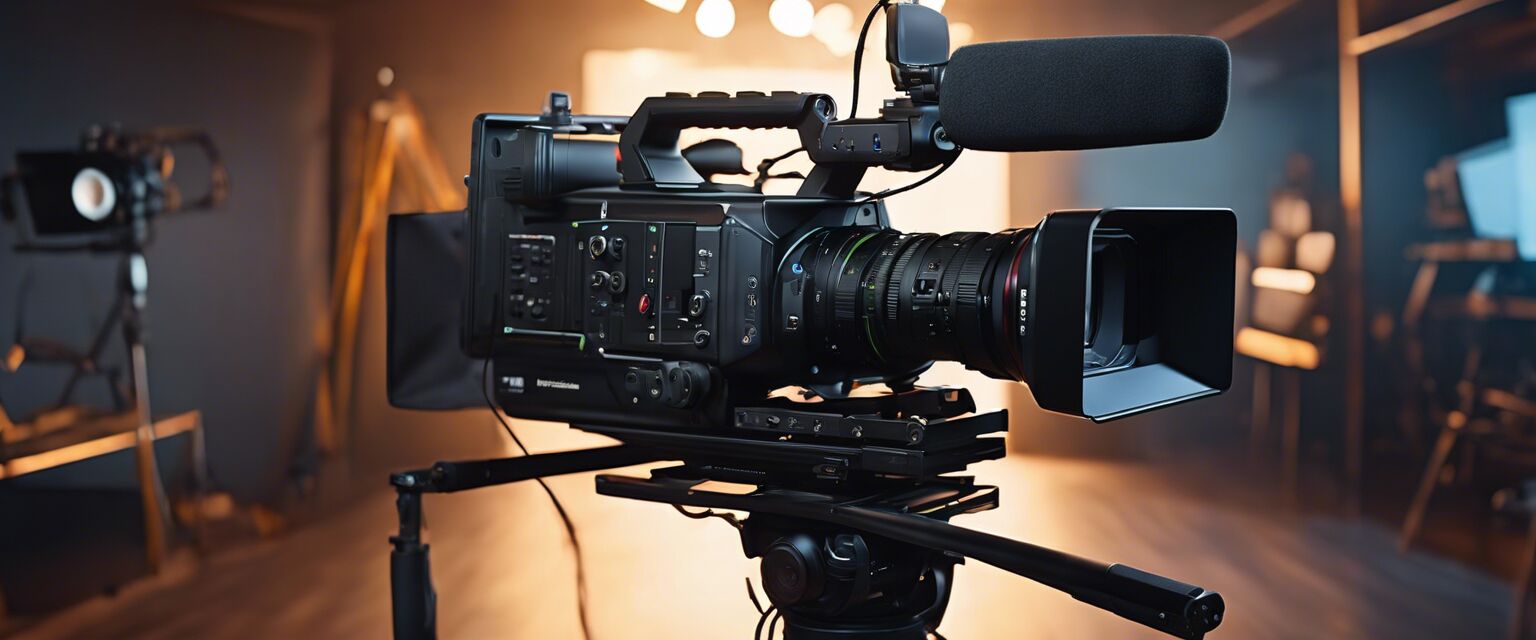
Professional Microphones for High-Quality Audio
Key Takeaways
- Choosing the right microphone is crucial for achieving professional audio quality.
- Types of microphones vary in design and usage, impacting audio capture.
- Understanding specifications like frequency response and sensitivity can enhance your selection process.
- Accessory equipment, such as windscreens and boom poles, can improve recording quality.
When it comes to professional video production, audio quality is just as important as the visuals. A great video can be diminished by poor sound. This article delves into the world of professional microphones, providing reviews and recommendations to ensure you achieve the best audio quality in your video productions.
Types of Professional Microphones
Microphones come in various types, each designed to serve specific purposes. Understanding these types is vital for selecting the right microphone for your project.
| Microphone Type | Description | Best Use Cases |
|---|---|---|
| Dynamic Microphones | Durable and versatile, they are great for live sound and loud sources. | Vocals, live performances, and instrument miking. |
| Condenser Microphones | More sensitive and accurate, ideal for capturing detailed sound. | Studio recordings, vocals, and acoustic instruments. |
| Ribbon Microphones | Provide a warm sound, often used for vintage applications. | Vocals, strings, and brass instruments. |
| Lavalier Microphones | Small, clip-on mics perfect for interviews and presentations. | On-camera interviews, video shoots, and presentations. |
| Shotgun Microphones | Highly directional, ideal for capturing sound from a distance. | Film and video production, especially outdoors. |
Understanding Microphone Specifications
When choosing a microphone, it's essential to understand key specifications:
- Frequency Response: Indicates the range of frequencies the microphone can capture.
- Sensitivity: Refers to the microphone's ability to pick up sounds.
- Polar Pattern: Defines the direction from which the microphone picks up sound.
- Impedance: Impacts compatibility with recording devices.
Top Features to Consider
Here are some critical features to consider when selecting a professional microphone:
- Build Quality: Ensure the microphone is durable and withstands regular use.
- Connectivity: Choose between USB or XLR connections based on your setup.
- Portability: Consider if you need a microphone thatâs easy to transport.
Essential Accessories for Microphones
Accessories can enhance your microphone's performance and usability:
| Accessory | Purpose |
|---|---|
| Windscreen | Reduces wind noise and plosive sounds during outdoor recording. |
| Shock Mount | Minimizes vibrations and handling noise. |
| Boom Pole | Allows for microphone placement without being in the shot. |
| Cables | Ensure high-quality cables for optimal signal transfer. |
Recommended Brands for Professional Microphones
While there are many brands available, a few stand out for their quality and reliability. Here are some renowned brands to consider:
- Shure
- Audio-Technica
- Rode
- Sennheiser
- AKG

Tips for Selecting the Right Microphone
Beginners Section
- Determine your recording environment - indoors or outdoors.
- Consider the type of sound you will be capturing.
- Budget appropriately for quality equipment.
- Test microphones when possible to find the best fit.
Conclusion
Investing in a professional microphone can significantly elevate the audio quality of your video productions. By understanding the different types of microphones, their specifications, and essential accessories, you can make an informed decision that will benefit your projects.
Pros
- Improved audio quality enhances overall production value.
- Wide variety of microphones caters to different recording needs.
- Access to professional-grade equipment elevates credibility.
Cons
- High-quality microphones can be expensive.
- Learning curve involved in understanding specifications.
- Requires additional accessories for optimal usage.

For more insights into professional audio equipment, feel free to explore our other categories like audio equipment, cameras, and filming accessories.







